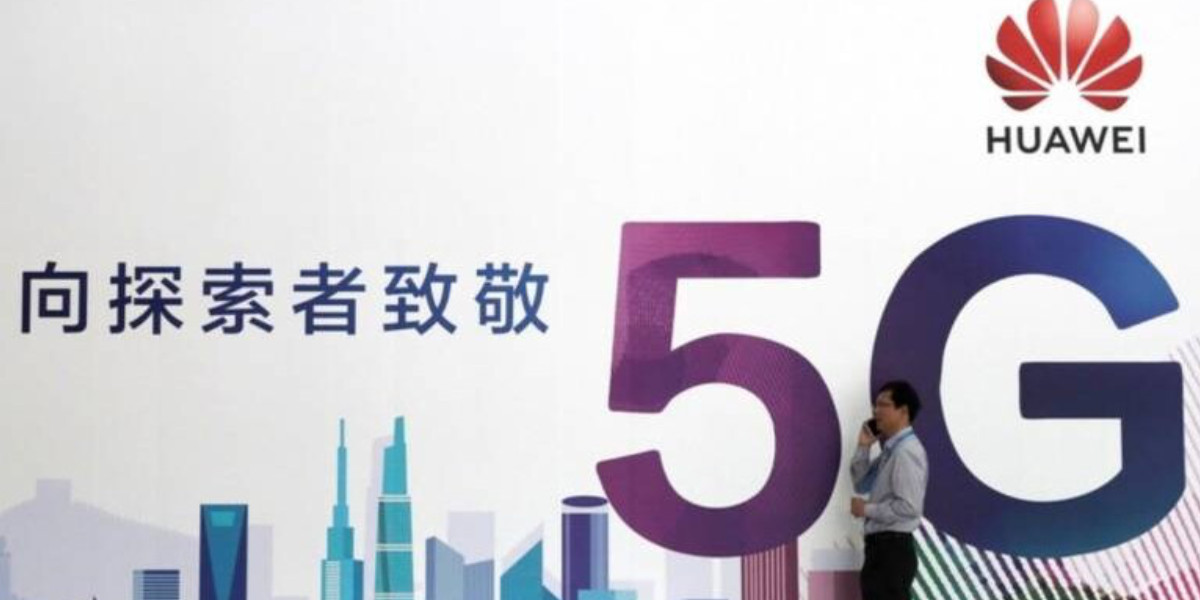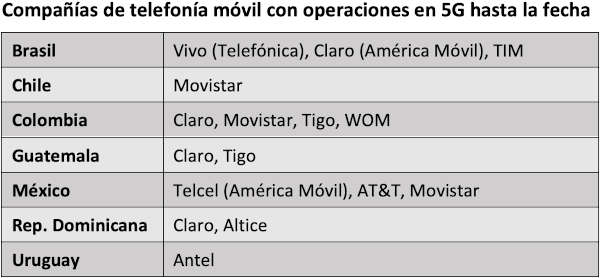In the picture
Huawei corporate image
As elsewhere, 5G mobile technology is beginning to take hold instructions in Latin America. It is doing so more slowly than in more developed regions (some countries are still expanding 4G) and experiencing more directly the geopolitical struggle between the United States and China: the pressure from Washington to exclude Huawei from the new networks may be more noticeable in countries geographically closer; at the same time, the financial difficulties of the countries advise not to undermine the potential of the band auctions. So far, only Costa Rica has banned the use of Chinese technology in the new networks, while Mexico has excluded it only near the US border.
Huawei and other Chinese companies such as ZTE and Xiaomi have had a favorable market in Latin America in recent years. High inflation and the financial difficulties of the states have favored cheaper technological solutions than those offered by the most prominent western companies, both in terms of technical infrastructure and users' mobile handsets. 4G-LTE connections in the region are supported up to 70% by Huawei infrastructure, according to data offered by this company, which means that the communications of more than 660 million Latin Americans travel every second through Chinese technology. Huawei had in 2022 in these countries a business Issue of 4,500 million dollars, with a growth of 9% over the previous year.
Huawei's figures are mainly due to sales of its hardware, which it supplies to many of the main telephone operators, while Xiaomi has carved out a niche for itself in the cell phone market. In 2023, Xiaomi obtained around 12% market share, in third position after the 40% of South Korea's Samsung and the 20% of the American Motorola.
Chinese technology is an attractive option for regional governments and service providers. As for specific countries, in Brazil, for example, six out of seven 4G mobile networks were built by Huawei, while in Mexico, 55% of the 4G-LTE cellular network has Huawei technology. Furthermore, in Mexico, the Chinese government has supported the development of the country's shared network by investing in Atlan Redes.
The position achieved allows Chinese interests to play strongly in the promising development of communications in Latin America. According to GSMA, the global organization of telephone operators, in 2021 mobile technologies and services generated 7.4% of the region's GDP, a contribution that amounted to more than US$345 billion.
7.4% of the region's GDP, a contribution that amounted to more than US$345 billion in economic value added, generated 1.6 million direct and indirect work jobs, and contributed tax revenues of nearly US$30 billion. By 2025, 83% of connections are expected to be with smartphones and 11% of all connections will already be via 5G.
Pressure from Washington
Chinese penetration in the communications sector has mobilized the United States. After Vodafone Italy discovered some "hidden backdoors" in Huawei equipment between 2009 and 2011 (the Chinese business has admitted that there were "vulnerabilities", but denies that it was an intentional plan) Washington has been alleging that Huawei can be used by the Chinese government as an espionage tool , which would give Beijing a significant advantage from a geopolitical point of view. In addition to advising its most direct allies to dispense with Chinese technology, the U.S. administration has been especially insistent on its mainland neighbors. The Southern Command - the Pentagon's regional security command - has warned of such risks in its publication directed at Latin America.
In 2019, the Trump Administration banned US companies from using Huawei's technologies and invited other countries, especially Latin American countries, to follow suit, citing article 7 of China's National Intelligence Law, enacted the previous year, which states that "all organizations and citizens shall support, assist, and cooperate with national intelligence efforts in accordance with the law, and protect the secrets of the national intelligence work of which they have knowledge". So far, countries such as Canada, the United Kingdom, Japan, Australia and New Zealand have followed the U.S. example.
Heeding that call, Jair Bolsonaro tried to find a legal way to prevent Huawei from building 5G networks in Brazil, despite the fact that this business was already an important provider of 3G and 4G technologies in the country. But after Trump's departure from the White House Bolsonaro corrected his position, because if Huawei was subject to such a ban it could stop supplying 3G and 4G equipment, resulting in potential losses of billions of dollars. The same logic applies to other countries in the region, whose political and economic instability does not give them the same privilege as stronger countries to say no to Huawei.
If Chinese technologies really serve espionage purposes, then the region is already vulnerable to intrusion, as China equips most 3G and 4G networks. However, with 5G the risks would be much greater, as it allows for high-speed Internet, it will increase the issue of devices on the network and, consequently, the possibility of alleged infiltration of national infrastructures.
So far, Costa Rica has been the only country to exclude Chinese companies from its 5G networks. It did so indirectly, by approving a cybersecurity regulation that prohibits companies from countries that are not signatories to the 2001 Budapest cybercrime agreement from participating in 5G bidding processes. The government of Rodrigo Chaves has thus sought to boost the installation of US technology companies, which may opt for this country for the manufacture of chips.


